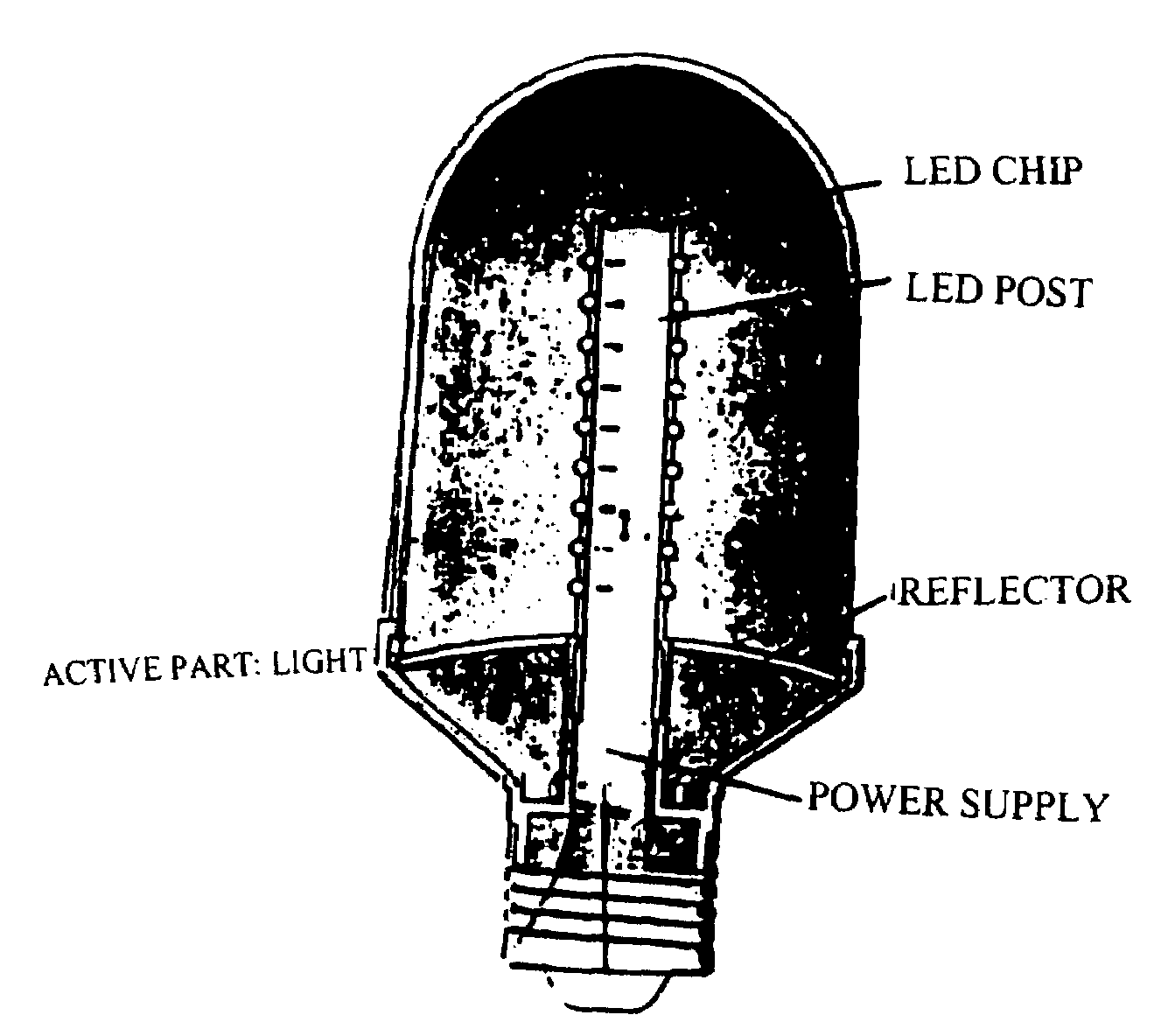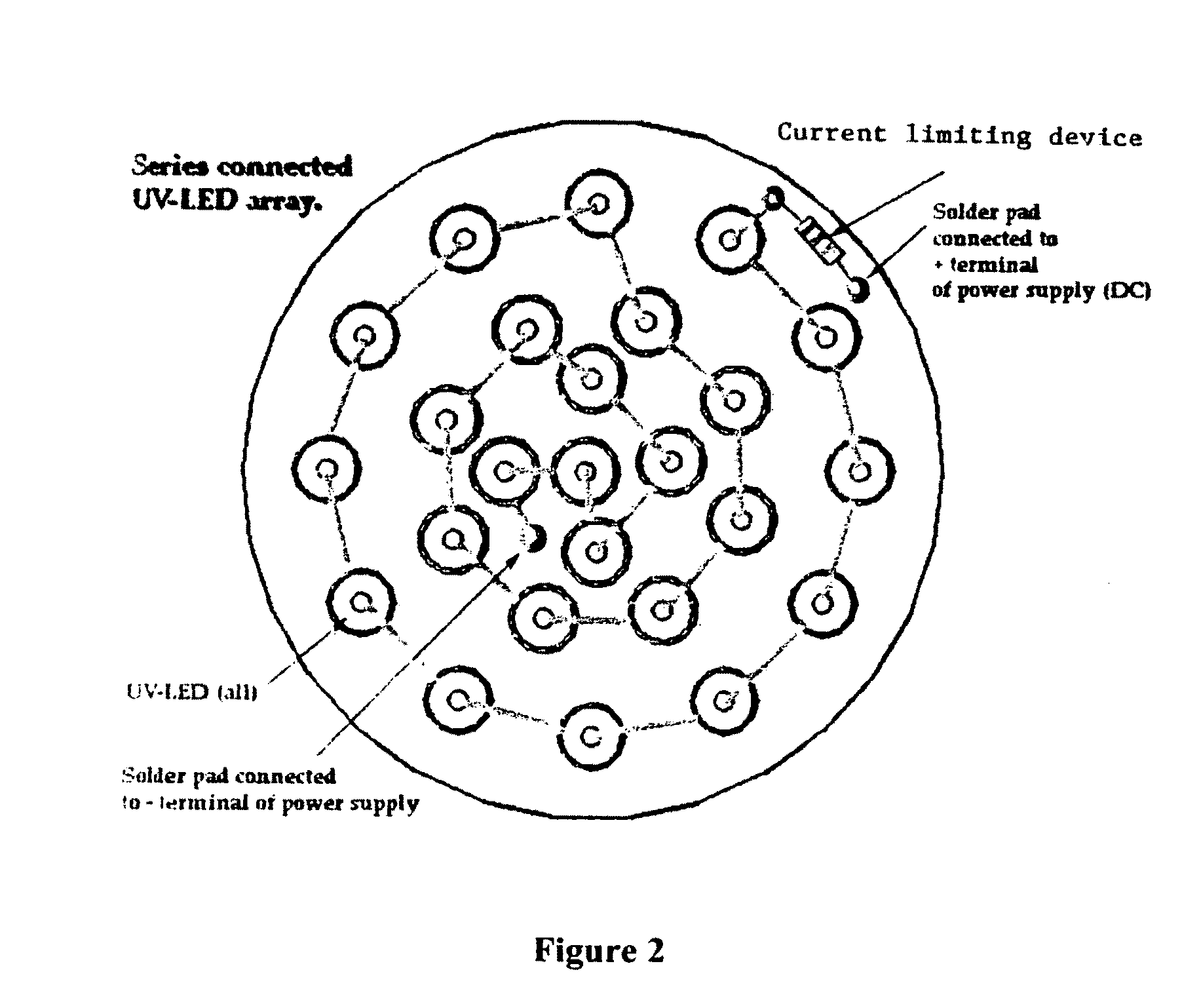Photon energy conversion structure
- Summary
- Abstract
- Description
- Claims
- Application Information
AI Technical Summary
Benefits of technology
Problems solved by technology
Method used
Image
Examples
Embodiment Construction
[0056]One or more preferred embodiments of the invention will be described, but the embodiments are merely exemplary ways of implementing the invention and the invention is not limited to these exemplary embodiments.
[0057]As shown in FIG. 1 one can incorporate currently manufactured, low cost, ultra-violet light emitting diodes of various UV wavelengths and situate the UV-LED and the voltage down converter(s) into a conventional light bulb design. This light bulb, which can either be made of glass or polycarbonate (non-breakable) will be coated with a thin film (uniform coating) of a high efficiency phosphor that can have a range of emitted colors for various applications and the shape of the light bulb can be conventional or any novel shape. Another advantage of this invention is that the bulb or other chosen novel shape does not need to be evacuated of ambient air.
[0058]Further if this bulb is designed to replace conventional fluorescent lights, in the form of long tubes or any ot...
PUM
 Login to View More
Login to View More Abstract
Description
Claims
Application Information
 Login to View More
Login to View More - R&D
- Intellectual Property
- Life Sciences
- Materials
- Tech Scout
- Unparalleled Data Quality
- Higher Quality Content
- 60% Fewer Hallucinations
Browse by: Latest US Patents, China's latest patents, Technical Efficacy Thesaurus, Application Domain, Technology Topic, Popular Technical Reports.
© 2025 PatSnap. All rights reserved.Legal|Privacy policy|Modern Slavery Act Transparency Statement|Sitemap|About US| Contact US: help@patsnap.com



